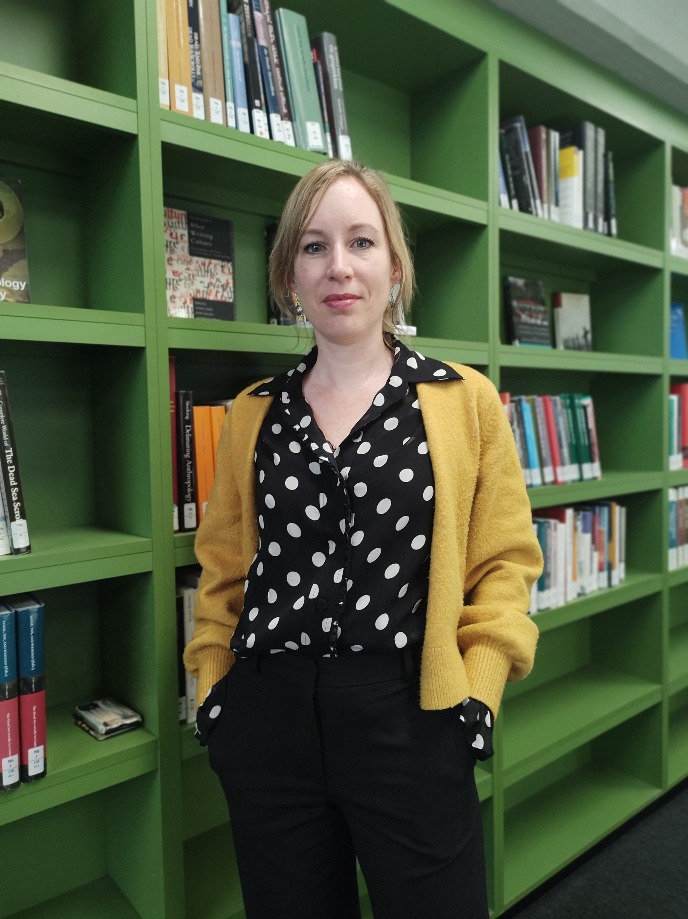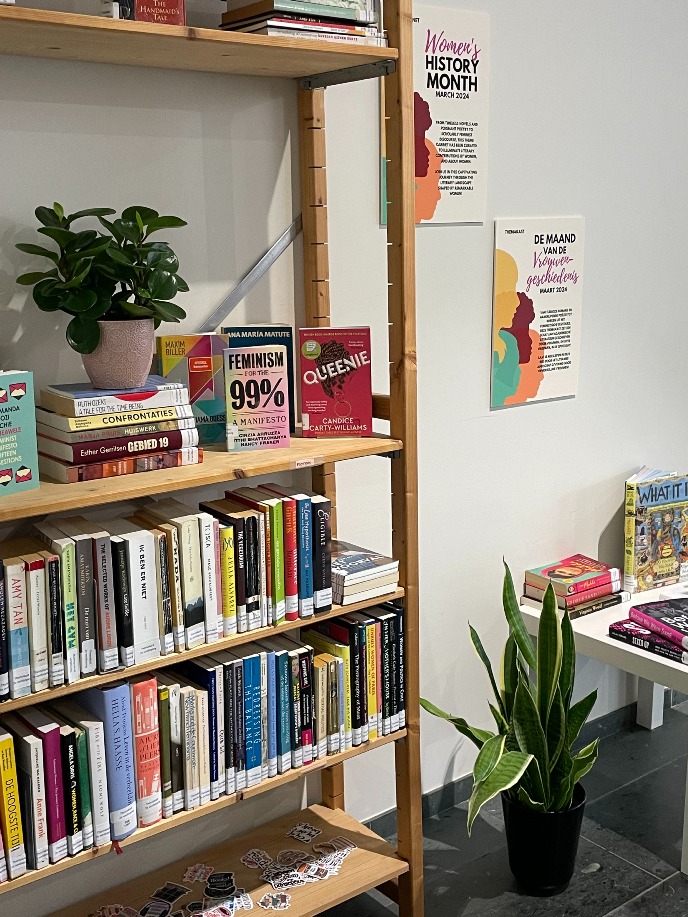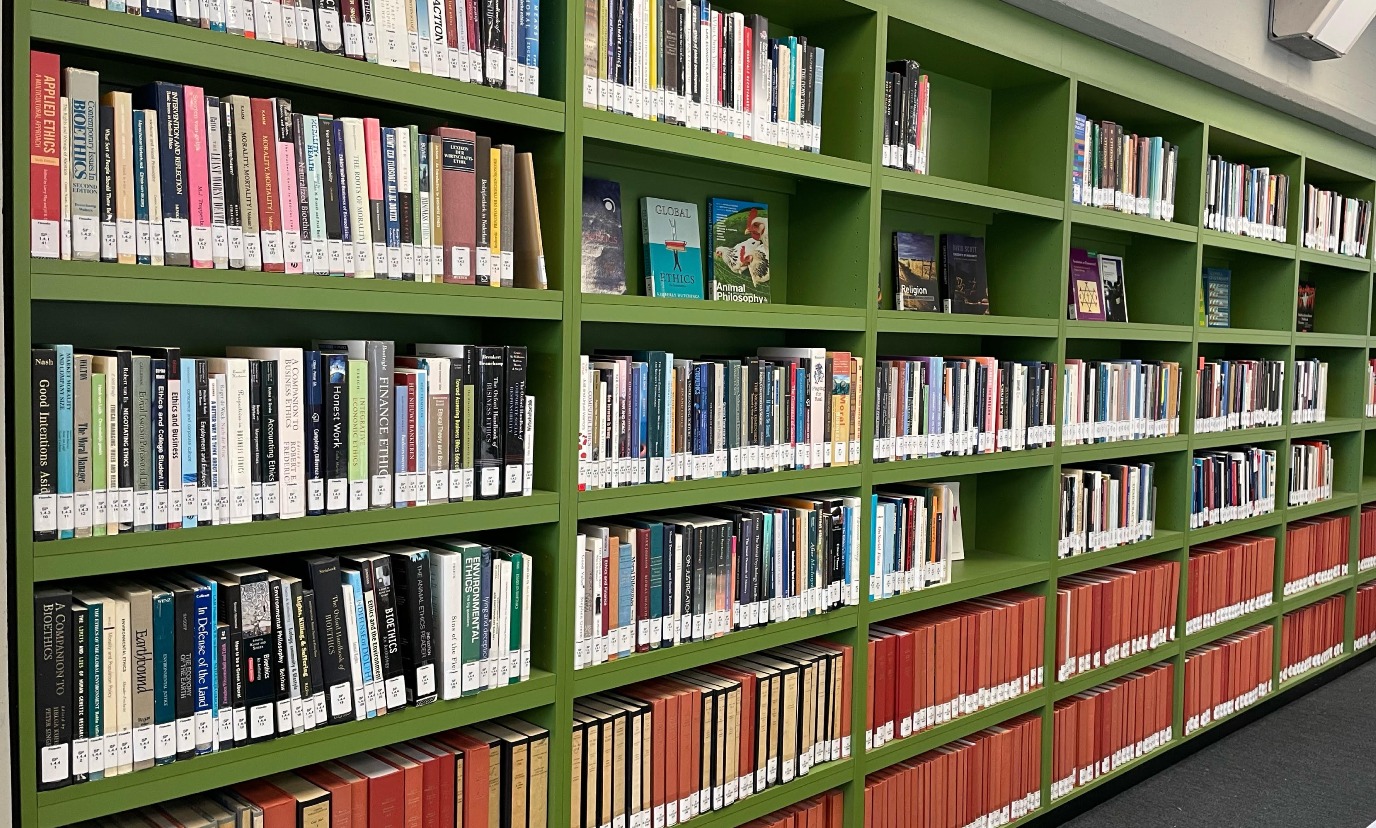Meet Jette Veenstra, collection specialist for the humanities

This year, our university celebrates its 410th anniversary. The University of Groningen Library is six months younger. What started with the first library catalogue in 1619 (four years after its founding), is now a library with millions of printed material and a rapidly growing collection of e-books, e-journals and e-resources.
Meet Jette Veenstra, collection specialist for the humanities (faculties of Philosophy, Arts and Religion, Culture and Society).
What do you do as a collection specialist?
As a collections specialist, I stay in touch with the faculties and am the point of contact for the collections. I have regular meetings with faculty staff about what their wishes are regarding the collection and to give advice on what we can do in this regard.
I am also responsible for the composition and presentation of the collections in the reading rooms. Even though this is only a small part of our printed collection - the vast majority is kept in our closed stacks - it is very important that this is an accurate representation of current teaching and research.
I keep an eye on collection budgets and work closely with the library’s license team. They manage licenses for digital collections and together we have a preparatory and advisory role for the acquisition.
"Within the humanities, the printed book is still very much alive."
How does the library collection come about?
The acquisition of e-books and e-journals is largely automated: through arrangements with major academic publishers, a lot of relevant literature is readily available at the time of publication. The library also purchases compulsory and recommended educational literature.
Selection of individual titles is demand-driven. Acquisition suggestions can be submitted through an online form, or by contacting a collection specialist. UG staff regularly approach us for new acquisitions.
We prefer to purchase new material in digital format: as an e-book or e-journal. When this is not possible, for example because of high costs, restrictions on free use, or the unavailability of a title digitally, books or journals are purchased on paper.
By the way, within the humanities, the printed book is still very much alive. That is a big contrast with a faculty such as Science and Engineering, where where they make greater use of journal articles. In the humanities, much more historical research is done. Because older material is often not yet digitized, we have more books in print. Also, within the humanities, we have to deal more with smaller publishers who do not have sufficient resources to offer everything digitally.

How do you make the collection visible?
On the 2nd floor of the UB City Centre we recently set up a theme cabinet where we showcase books around various themes, such as UG guest author Raoul de Jong, Women's History Month (March), Pride Month (June) and traveling (August).
A theme cabinet is a great place to create interdisciplinary collections and to display what we hold as a library. Also, we hope it creates more engagement with students. To make the cabinet extra appealing, we made it a bit homely with a plant and posters. There will also soon be a comfy chair, so you can sit there and flip through a book.
"The books immediately catch the eye and are more accessible this way."
On Instagram, we highlight books by means of a video in which we skim a book. In this way, we want to reach students in a way that matches their perceptions.
We also organize exhibitions with material from our collections, recently for example the photo exhibition Arab Orthodox Christians, Nationalism and the 'Holy Land' in collaboration with Karène Sanchez Summerer, UG Professor Professor of Middle East Studies.
At the moment, we are thinking about how to make the reading room collections visible in a more attractive way. A good example can be seen on the 4th floor. There, green cabinets have been installed displaying a selection of the reading room collections for Philosophy and Religion, Culture and Society. The books immediately catch the eye and are more accessible this way.

The scientific information landscape is changing rapidly. What do you notice of this?
Digital access to material is becoming increasingly important. At the same time, we are very much running up against the restrictions imposed by publishers on digital material and the enormously high prices for digital access. The cost of unlimited access to an e-book can run into hundreds of euros. Then you have to look very carefully at what access is needed and what the budget allows.
It also has a positive side: through the e-book packages we have, we offer access to a whole lot of material. Our digital collection has grown to 1.7 million e-books, 150,000 e-journals, and over 500 licenses on databases and other e-resources.
What is your personal favorite from the humanities collection?
I can't name one favorite. However, I do have a great fondness for everything to do with Latin America and I am very interested in the human psyche.

Some of my favorite books:
1491 by Charles C. Mann, The Norton Anthology of Latino Literature by Ilan Stavans en Edna Acosta-Belén, The Myth of Normal by Gabor Maté, and Solito, Solita: crossing borders with young refugees from Central America by Steven Mayers en Jonathan Freedman (eds).
Contact
Do you have questions or comments about the collection for the humanities?
humaniora-bibliotheek rug.nl
Collectiespecialisten per faculteit
More information
Collections
Collection management UB
| Last modified: | 12 March 2024 2.25 p.m. |
More news
-
29 April 2024
Tactile sensors
Every two weeks, UG Makers puts the spotlight on a researcher who has created something tangible, ranging from homemade measuring equipment for academic research to small or larger products that can change our daily lives. That is how UG...
-
16 April 2024
UG signs Barcelona Declaration on Open Research Information
In a significant stride toward advancing responsible research assessment and open science, the University of Groningen has officially signed the Barcelona Declaration on Open Research Information.
-
02 April 2024
Flying on wood dust
Every two weeks, UG Makers puts the spotlight on a researcher who has created something tangible, ranging from homemade measuring equipment for academic research to small or larger products that can change our daily lives. That is how UG...

